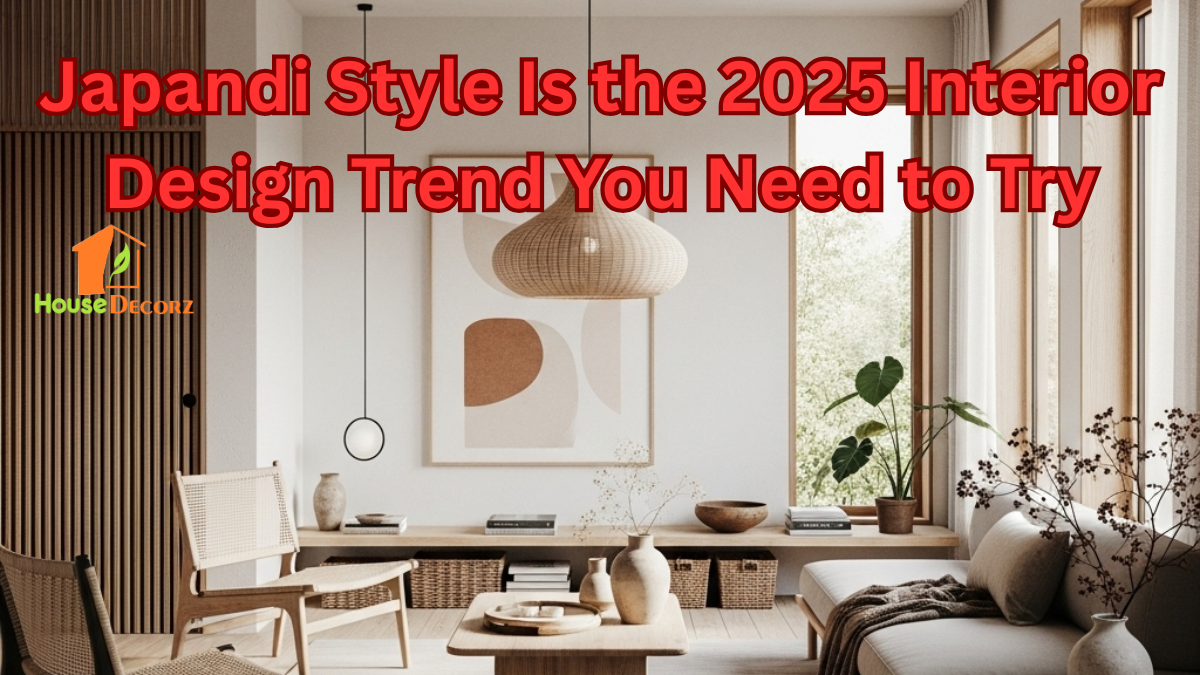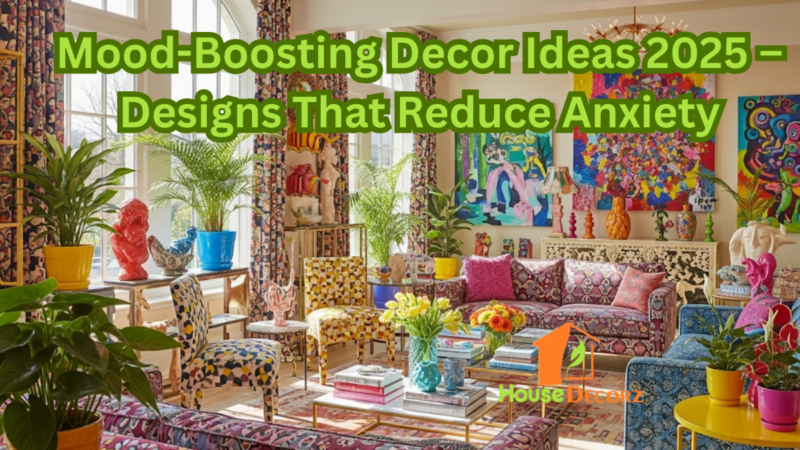Japandi Style Is the 2025 Interior Design Trend You Need to Try

As we step into 2025, one interior design trend is making waves for its unique blend of simplicity, functionality, and comfort—Japandi interior design 2025.
A hybrid of Japanese minimalism and Scandinavian coziness, this design philosophy is perfect for anyone seeking a tranquil, clutter-free space that still feels warm and inviting.
Let’s dive into what makes Japandi the go-to design choice this year and how you can incorporate it into your home.
What is Japandi Interior Design?
Japandi is a fusion of Japanese wabi-sabi aesthetics—which celebrates natural materials and imperfection—with the Scandinavian principle of hygge, known for its cozy, calming ambiance.
Together, they create a design style that is both minimalist and functional, yet warm and personal.
Unlike sterile minimalism, Japandi infuses emotion and depth into every piece, creating a home that’s not just stylish but also soul-soothing.
Why Japandi Interior Design is Dominating 2025
1. A Response to the Chaos of Modern Life
In an era filled with overstimulation and clutter, people are yearning for peace and simplicity at home. Japandi answers this call with an approach that eliminates excess while enhancing comfort.
2. Sustainability Meets Style
Japandi interior design 2025 embraces eco-conscious living. Think sustainably sourced wood, organic fabrics, and timeless furniture. This trend isn’t just about looking good—it’s about feeling good and doing good for the planet.
3. Flexible and Functional Living
Japandi decor adapts easily to different lifestyles. Whether you live in a small apartment or a large home, its emphasis on clean lines, neutral tones, and multi-functional furniture fits seamlessly into any setting.
Key Elements of Japandi Interior Design 2025
Neutral Color Palette
Japandi spaces typically feature earthy tones like beige, warm white, stone gray, and muted greens. These shades promote calmness and allow natural textures and materials to stand out.
Natural Materials
From bamboo and rattan to oak and linen, Japandi favors organic materials. These add warmth and character, aligning perfectly with the minimalist decor ethos.
Minimalist Furniture with Purpose
Choose furniture that serves more than one function—like a bench that doubles as storage or a coffee table with clean, curved lines. Less is more, but every piece should be intentional.
Cozy Textures
While the look remains minimal, Japandi introduces cozy home ideas through plush rugs, soft throws, and layered bedding, especially in spaces like bedrooms and reading nooks.
How to Bring Japandi Into Your Home
Start with Decluttering
Remove anything that doesn’t serve a purpose or bring joy. Japandi is not about empty spaces, but about mindful selection and visual clarity.
Use Light Wisely
Natural light is a crucial part of the Japandi vibe. Large windows, sheer curtains, and minimal window dressings allow light to pour in and illuminate the space naturally.
Add Plants Sparingly
Choose a few statement plants, such as a bonsai tree or a fiddle leaf fig, to introduce nature without overwhelming the minimalist ambiance.
Incorporate Artisan Touches
Handcrafted ceramics, woven baskets, and textured pottery can elevate the aesthetic while supporting traditional craftsmanship.
Japandi for Every Room
Living Room
Opt for a low-profile sofa in a neutral tone, a reclaimed wood coffee table, and a simple yet elegant floor lamp. Add depth with a linen throw and a soft area rug.
Bedroom
Use a platform bed with a wood frame, layered bedding in cotton or linen, and bedside tables with hidden storage. Keep wall decor minimal—a single piece of art or a calming nature print works best.
Kitchen and Dining Area
Focus on function and clean design—open shelving with neatly arranged dishes, ceramic serving ware, and minimal, well-crafted furniture. A wood dining table paired with Scandinavian chairs completes the look.
Recommendation
Boho vs. Minimalist Interiors – Which Style Suits Your Personality?
Top 5 Minimalist Interior Design Trends You’ll See Everywhere in 2025
7 Vastu Tips You Must Follow While Designing Home Interiors
Wall Art Trends 2025 – What U.S. Interior Designers Are Hanging This Year
TV Wall Decor: The Ultimate Guide for Stunning Interiors
FAQs About Japandi Interior Design 2025
Q1: What makes Japandi different from other minimalist styles?
A1: Japandi combines Japanese and Scandinavian design philosophies. Unlike stark minimalism, it balances sleek simplicity with warm, organic textures, making spaces feel cozy yet uncluttered.
Q2: Is Japandi suitable for small apartments?
A2: Absolutely. Japandi is perfect for small spaces due to its emphasis on functionality and simplicity. It avoids bulky furniture and maximizes every inch of space with smart storage and multi-purpose items.
Q3: Can I mix Japandi with other design styles?
A3: Yes, Japandi pairs well with Boho or Industrial touches, as long as the color palette and overall aesthetic stay consistent. Keep it simple, balanced, and intentional.
Q4: What materials are best for Japandi furniture and decor?
A4: Opt for natural materials like wood, stone, linen, and cotton. These not only align with Japandi’s aesthetic but also promote a healthier, more sustainable home environment.
Q5: How do I make a Japandi room feel cozy without adding clutter?
A5: Layer textures like soft throws, rugs, and cushions in muted tones. Use warm lighting and incorporate a few carefully selected decor pieces like handmade vases or framed art.
Conclusion
Japandi interior design 2025 is more than a passing trend—it’s a lifestyle choice that champions mindful living, timeless aesthetics, and comfortable minimalism.
Whether you’re redesigning your whole home or just refreshing a single room, embracing Japandi can transform your space into a serene and stylish sanctuary.
Now is the perfect time to simplify your surroundings and infuse your home with the tranquility and warmth this trend offers.






